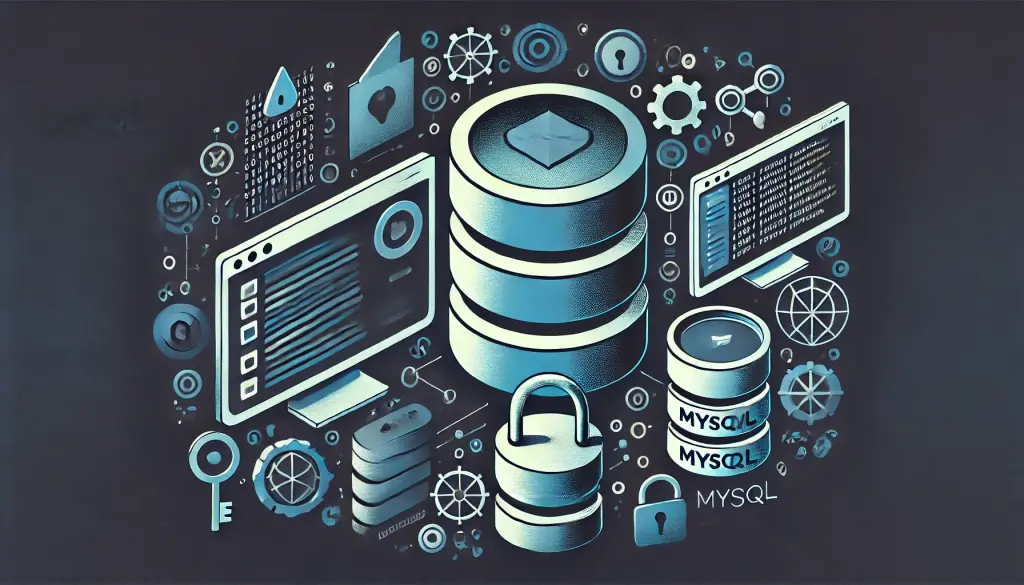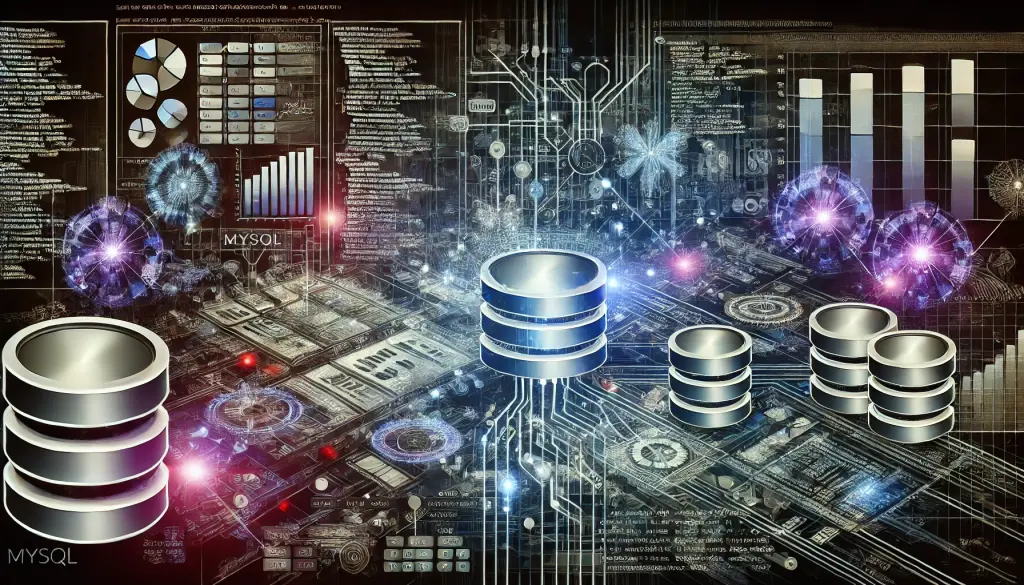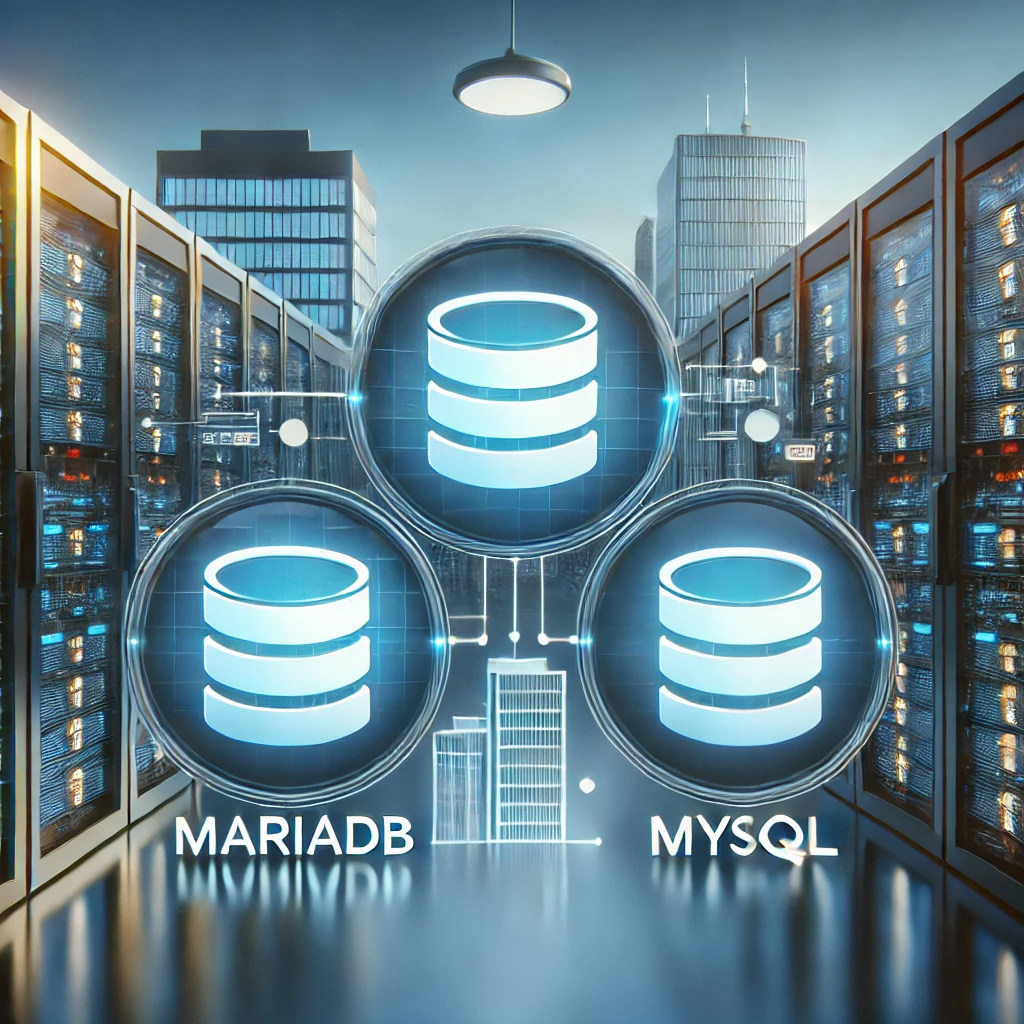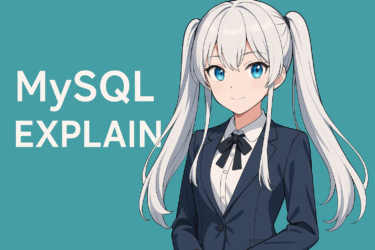目次
1. Introduction
Relational database management systems (RDBMS) are indispensable in modern web applications and business systems. RDBMS efficiently manages massive amounts of data and serves as the foundation for quickly retrieving the data needed, and is used by many companies and developers. Among them, MySQL and MariaDB are especially popular and are adopted by numerous companies and projects. MySQL has a long history and is known as a reliable database, while MariaDB was developed as a fork of MySQL and has undergone its own evolution. Although they seem similar, they have subtle differences, and users need to choose based on their needs. In this article, we will clearly explain the differences between MySQL and MariaDB, and delve into each one’s features, advantages, and disadvantages. This will help you understand the differences and choose the database that best fits your project or business.2. Historical Background of MariaDB and MySQL
Birth and Development of MySQL
MySQL was released in 1995 and quickly gained widespread support as an open‑source relational database management system (RDBMS). It was developed by MySQL AB, the company of developer Michael “Monty” Widenius, and became popular as a lightweight and high‑performance database. MySQL is especially often used in combination with PHP as an optimal database for websites and applications, and is known as part of the LAMP stack (Linux, Apache, MySQL, PHP). In 2008, Oracle acquired Sun Microsystems, which owned MySQL. The acquisition sent shockwaves through MySQL users and the community, raising concerns about whether Oracle would preserve MySQL’s open‑source nature. Some users and developers worried about Oracle’s commercial motives and became uneasy about MySQL’s future.Birth of MariaDB and Reasons for Forking from MySQL
Due to concerns over Oracle’s acquisition of MySQL, Monty Widenius, a co‑founder of MySQL, developed the MySQL‑derived database “MariaDB” in 2009. MariaDB maintains high compatibility with MySQL while adding its own enhancements and features, reflecting the open‑source ethos strongly. The name MariaDB comes from Monty’s daughter, Maria. Because MariaDB is built on MySQL’s codebase, many features and commands are shared. However, the MariaDB community maintains an independent development model, allowing it to add features without Oracle’s influence. In particular, it emphasizes open‑source licensing and aims to ensure database transparency and flexibility. The fork between MySQL and MariaDB redefined the significance of open source in the database world and its relationship with corporate‑driven development. While MySQL continues to enjoy broad user support, MariaDB has steadily grown its following thanks to its freedom and added functionality.3. License Differences
MySQL Licensing
MySQL is offered as open source, but Oracle adopts a licensing model that also takes commercial use into account. Specifically, MySQL is available under two licensing options: the GNU General Public License (GPL) and a commercial license. This dual licensing is intended to serve both users who want to use MySQL as open source and companies that need a license agreement for commercial use. When using MySQL under the GPL license, you must comply with the open‑source conditions when modifying or redistributing the code. Conversely, incorporating MySQL into commercial or proprietary applications may require a commercial license agreement with Oracle. Thus, while MySQL’s licensing is flexible, you need to be aware that commercial use generally assumes a contract with Oracle.MariaDB Licensing
MariaDB is provided entirely under the GNU General Public License (GPL). As a result, companies and developers using MariaDB are not required to obtain any additional license agreements for commercial use. Moreover, the MariaDB community operates independently of Oracle’s commercial influence, so it is expected that MariaDB will continue to be offered as fully open source. The MariaDB licensing policy emphasizes keeping the database fully open source, allowing businesses and individuals to freely use, modify, and redistribute MariaDB’s code. Because of this licensing difference, the choice between MySQL and MariaDB often hinges on commercial use: MariaDB’s sole GPL licensing makes it attractive to companies that want to avoid the complexity of commercial contracts.Impact of License Differences
The difference in licensing between MySQL and MariaDB is a key factor for developers and businesses. In particular, the terms of Oracle’s commercial MySQL license can affect commercial deployments, making MariaDB attractive to companies that value clear and flexible licensing. Additionally, within the open‑source community, MariaDB’s GPL license enjoys stronger support than MySQL. If you prioritize open‑source transparency and want a database with fewer commercial restrictions, MariaDB is the advantageous choice from a licensing standpoint.4. Features and Performance Comparison
Differences in Storage Engines
MySQL and MariaDB support different storage engines, which is one of the major differences between them. In MySQL, the primary default storage engines are InnoDB and MyISAM. InnoDB provides transaction capabilities and supports rollback and crash recovery to maintain data integrity, making it suitable for environments that require stability and reliability. MariaDB, on the other hand, adds its own storage engines in addition to those from MySQL. Notably, the Aria and XtraDB engines stand out. Aria was designed as a successor to MyISAM, developed to enhance speed and flexibility. XtraDB is an enhanced engine based on InnoDB, aimed at improving performance and scalability for large‑scale database workloads.Thread Pool Feature
MariaDB includes a built‑in thread pool feature that MySQL does not provide. This feature efficiently manages multiple threads to boost performance in situations with many concurrent connections. In particular, the thread pool is one reason MariaDB is chosen for web applications and large systems that experience high levels of simultaneous connections. While MySQL can also implement a thread pool, it requires a commercial license, so MariaDB’s free thread pool offers a cost advantage.JSON Data Type Support
The JSON data type makes handling NoSQL‑style data easier and enables flexible data structures. MySQL has natively supported the JSON data type since version 5.7, allowing smooth storage and querying of unstructured data. MariaDB, in contrast, does not provide a dedicated JSON data type, but offers functions and options that achieve the same JSON capabilities. If you need a system‑agnostic approach that doesn’t depend on a specific data model, MySQL’s JSON support is convenient, but because MariaDB can perform equivalent operations, there is no major functional difference.Performance Differences
There are also performance differences between MySQL and MariaDB. After forking from MySQL, MariaDB has applied its own optimizations, resulting in faster processing of certain queries and quicker data insertion. Additionally, MariaDB’s XtraDB engine delivers efficient performance for large‑scale transaction processing, making it well‑suited for projects with massive data volumes or high‑traffic websites. MySQL, meanwhile, continues to pursue performance improvements, but some features are available only under a commercial license, so not every user can benefit. Consequently, when flexible, open‑source optimization is desired, more users are opting for MariaDB.
5. Compatibility and Ease of Migration
Migration Steps from MySQL to MariaDB
The migration from MySQL to MariaDB is known to be relatively straightforward. Because MariaDB is developed as a fork of MySQL, much of the database structure and commands remain compatible. A typical migration process involves first backing up the MySQL database, installing MariaDB, and then restoring the backup data to complete the migration. Because MariaDB uses the same format as MySQL, you can sometimes reuse the data directory that was used with MySQL directly in MariaDB. However, due to version differences and some feature discrepancies, compatibility is not 100%, so it is recommended to perform thorough compatibility checks before migrating.Highly Compatible Features and Points to Note
While MariaDB maintains high compatibility with MySQL, there are differences in some features that require caution for certain operations. For example, there are differences in storage engines, some system variables, and function handling. MariaDB adds its own optimizations and new features, so it includes functions and settings that are not available in MySQL. Additionally, some MySQL-specific features or functionalities provided under commercial licenses may not transfer directly to MariaDB. Conversely, if a system that depends on MariaDB-specific features is moved back to MySQL, similar compatibility issues can arise, so careful verification is required when considering migration.Interoperability Between MariaDB and MySQL
Because MariaDB and MySQL share compatibility in many areas, interoperability is relatively easy, but it is important to understand that they are not identical. For instance, MariaDB includes storage engines and proprietary extensions for performance optimization that do not exist in MySQL. This can lead to situations where database optimization or tuning requires MariaDB-specific approaches. While emphasizing compatibility, if you want to take advantage of MariaDB’s additional features, you can adjust database settings and code to align with MariaDB specifications, allowing you to fully leverage MariaDB’s capabilities while maintaining compatibility. This makes migration from MySQL to MariaDB smooth, but achieving complete compatibility still requires some thoughtful adjustments.6. Community and Support Structure
MySQL Development and Support Status
MySQL is currently developed and maintained by Oracle. Oracle provides official support for MySQL, and its paid support plans are comprehensive. Especially for large enterprises or commercial use, MySQL’s commercial support helps with rapid troubleshooting and performance optimization. Oracle’s support includes bug fixes and security updates, which are valued in environments that require system stability. On the other hand, the open-source version of MySQL also benefits from users and developers worldwide sharing information, and community support is extensive. Because forums, Q&A sites, and various documentation are well-developed, a wealth of information can be obtained without using Oracle’s official support. However, open-source MySQL users do not have guaranteed support, so there is some risk when dealing with issues.MariaDB Development and Community Activity
MariaDB is managed by the MariaDB Foundation, which was founded by Monty Widenius, a co-creator of MySQL. This nonprofit organization promotes the development of MariaDB as an open source and maintains an independent community and development structure. Because the MariaDB Foundation runs the project without commercial influence, MariaDB is expected to retain its open-source freedom in the future. The MariaDB community is highly active, with many developers contributing proposals for new features and bug fixes. In particular, MariaDB’s official forums, GitHub repositories, and community documentation are easily accessible, accumulating a wealth of information comparable to MySQL. MariaDB’s open development model allows user requests to be reflected quickly, so unique features and improvements are often added at a fast pace, which is one of MariaDB’s attractions.Comparison of Support Structures
MySQL benefits from Oracle’s support, providing reliable support for large projects and enterprises. For users who need commercial support, Oracle’s support plans are a reassuring option. In contrast, MariaDB grows around its own open-source community, with user feedback and the project’s evolution. MariaDB also offers paid support services to meet commercial needs. MariaDB, which continues to evolve under community leadership, is ideal for users seeking transparency and a rapid development cycle typical of open-source software. MySQL is characterized by stability and reliability, while MariaDB stands out for its freedom and fast growth, so the choice will depend on the project’s needs.



